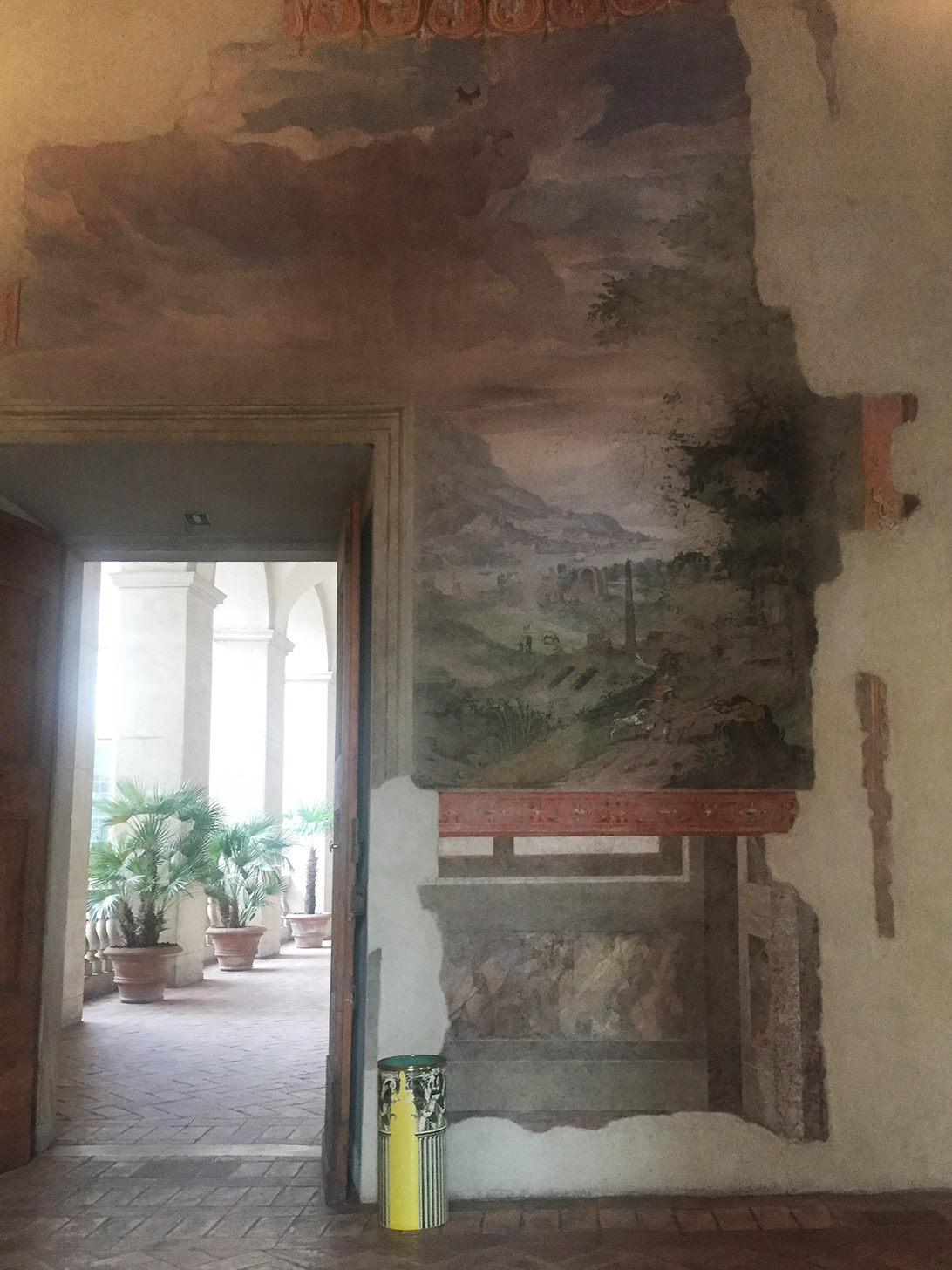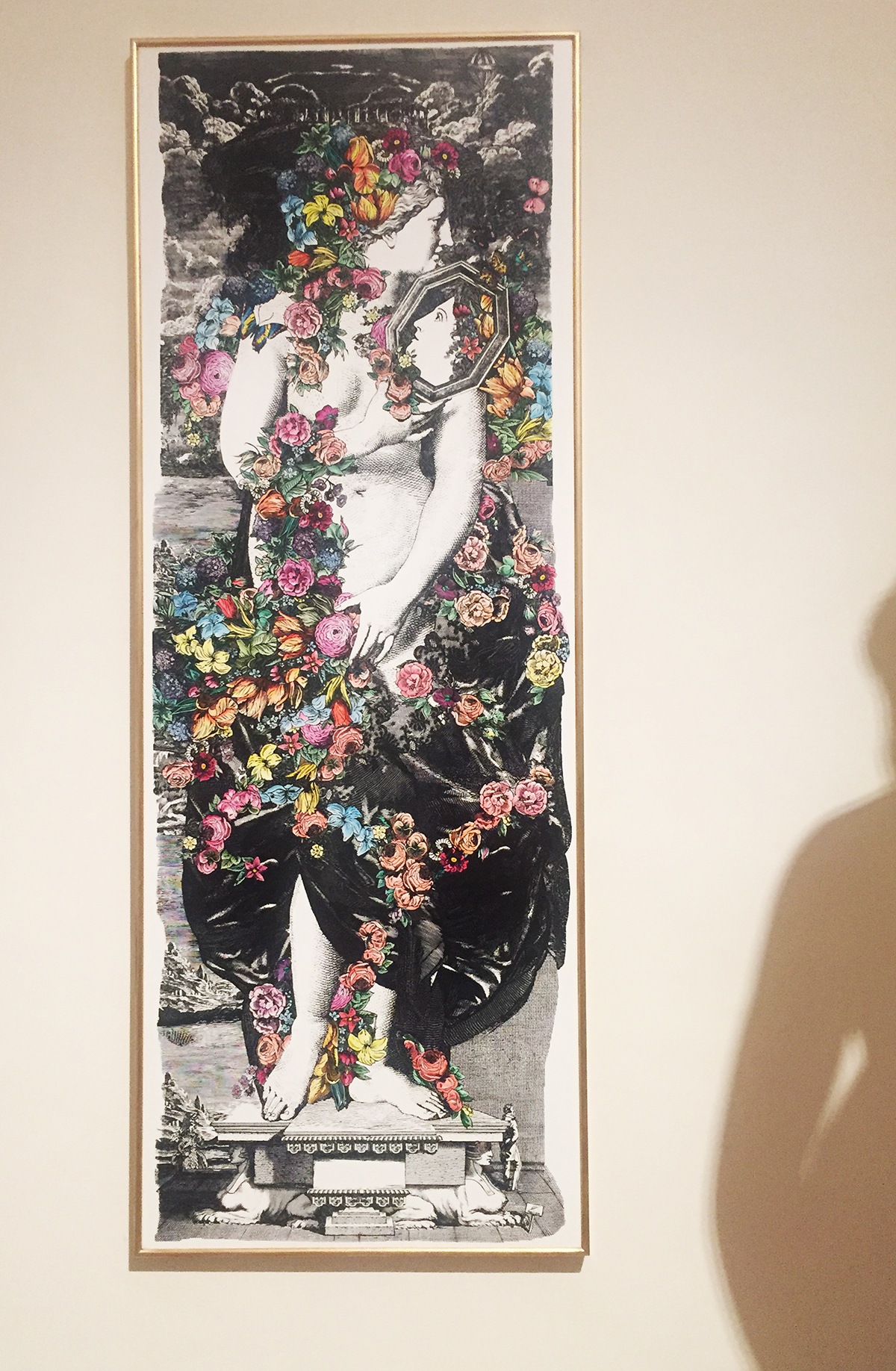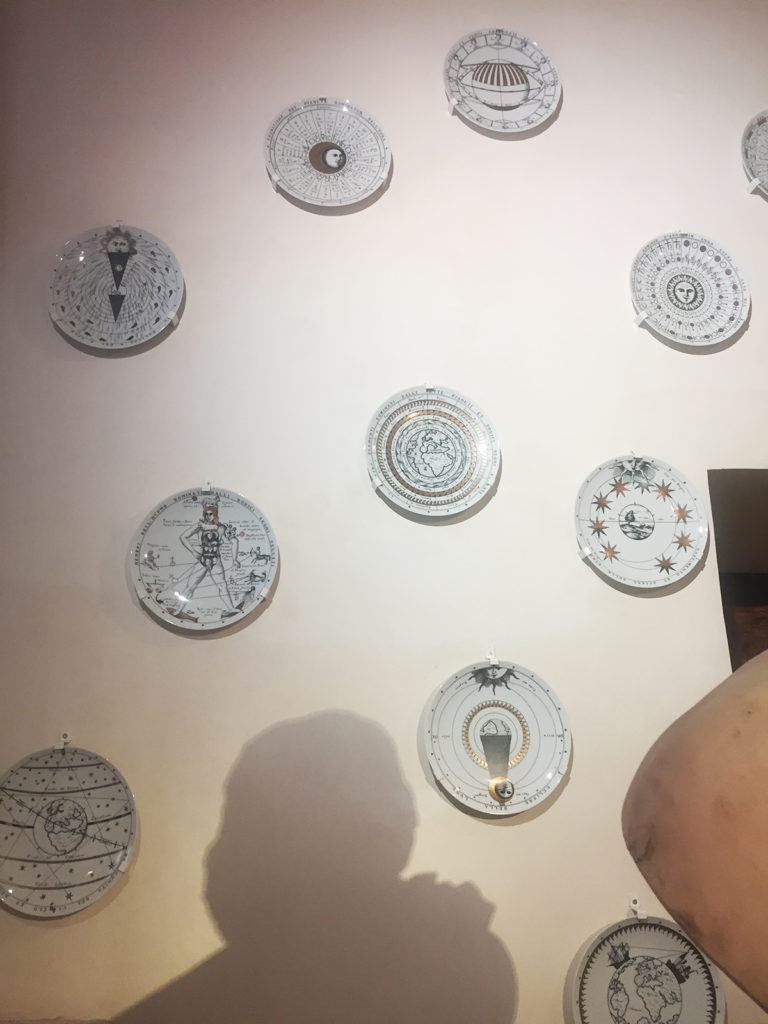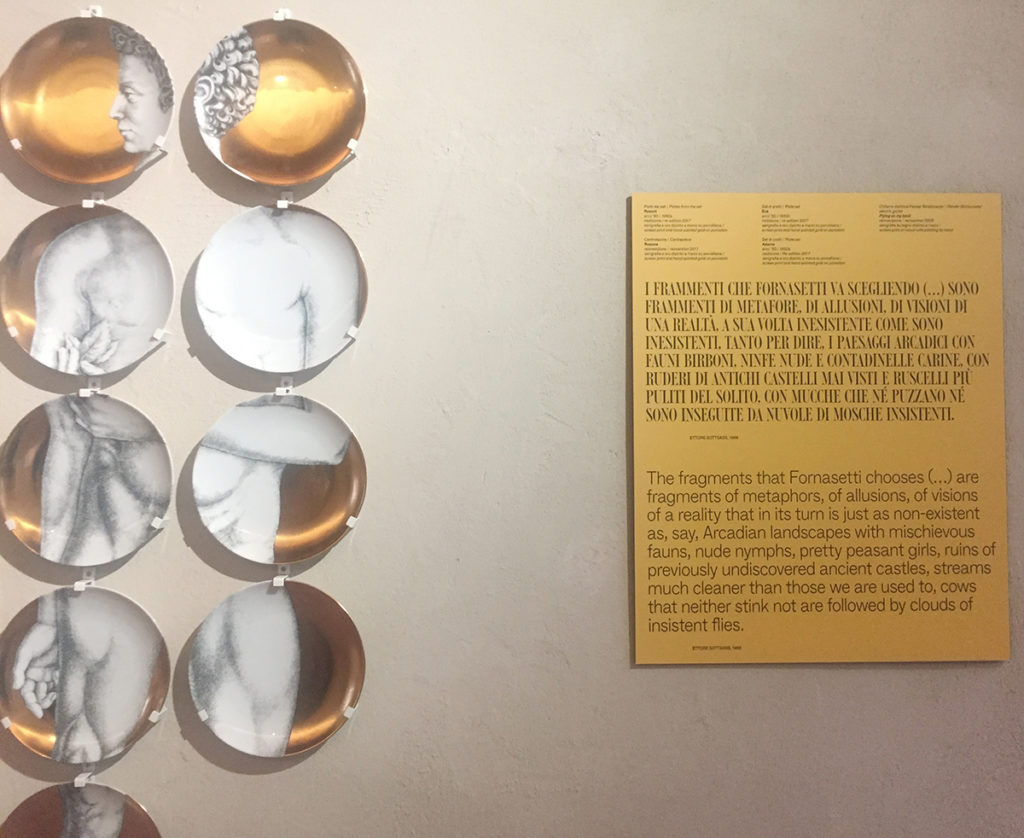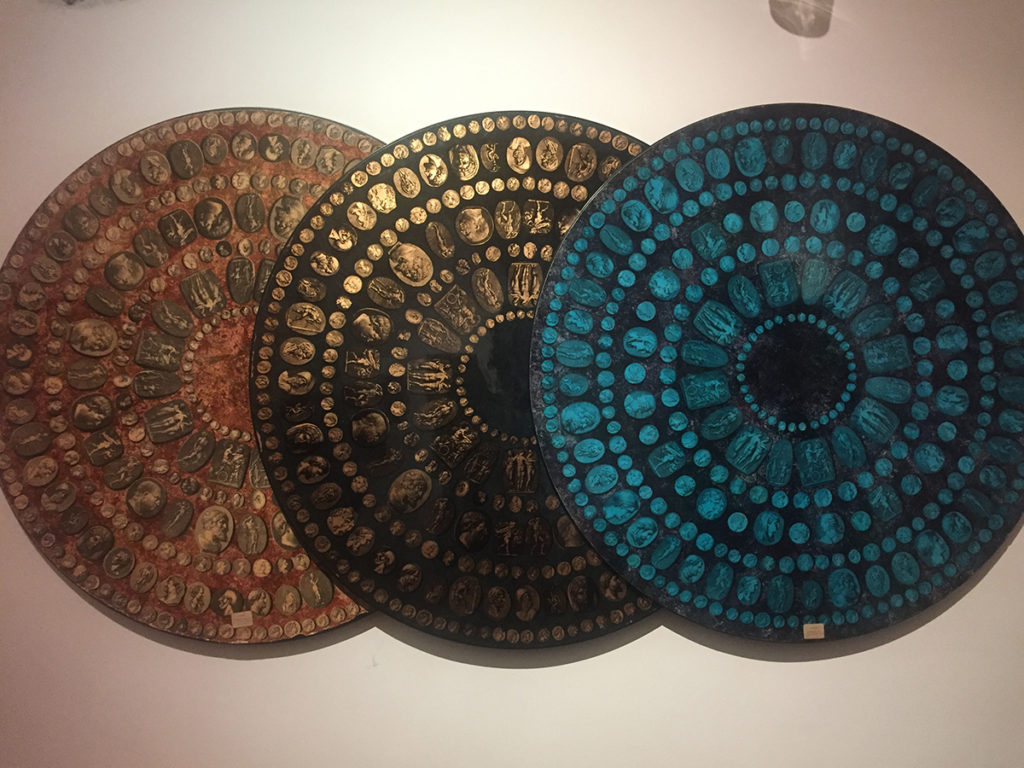Down the Fornasetti Rabbit Hole
In another series of my artist dates, I was lucky enough to attend the Piero Fornasetti exhibit, Citazioni pratiche, at the Palazzo Altemps. Even luckier? My date for the evening was my amazing mother. Together we explored a show that was not only beautiful in its whole, but also expertly curated in all its intricacies.
Throughout the entire show, one’s eyes are enticed with a conversation between antiquated and contemporary graphics. Statues and relics from the museum’s permanent collection juxtapose the modern illustrations and often ironic designs of Fornasetti – which borrow from classical iconography. Together, the pieces created a whimsical and imaginative world that adapted timeless icons into bold formats.

Part of the reason I was so inspired by this show was the fact that it amplified what I enjoy doing in my own design life – blending and overlapping the ideas of separate worlds to create something beautiful. A love of modern technology danced so intuitively aside the handcrafted art of the past to create a dream-like world. From the moment you step into the inner courtyard, audiences are greeted with what looks like a marbled face sinking back into the columns. Fornasetti’s Profilio maschile drew you into an amusing illusion right away, that used both his brilliant mind with the beautiful architecture of the museum.
With limited signage to guide you through the exhibit, the experience was like being on a kind-of treasure hunt through the Palazzo Altemp’s endless maze of rooms and ante-rooms. In a staid room adorned only with archetypal statues from Romany mythology, one discovers an irreverent umbrella stand or some oversized pillows, a screen or a bicycle – all imbued with a Fornasetti-made graphic illustration. Moving back and forth in time – from a sense of reverence to one of wittiness – and between media, from marble and ink to ceramic, lacquer and plastic – you become immersed in a visual repartee between epochs.
“With Fornasetti, two dimensions exist through the graphic form, but that’s not all: we can also see a third dimension in objects, and a fourth, with culture and memory, and a fifth – poetry,” said designer Philippe Starck.
His artistry adapted the classical into myriad bold formats, like carpets, chairs, figurines, and his famous plates. A hallway leading to an archeological installation is lined with tray designs; a hall of ancient maps leads the way to a room dedicated to typography, desks and book designs; a playful diptych of Adam and Eve is placed on either side of a restored fresco on the Palazzo walls.
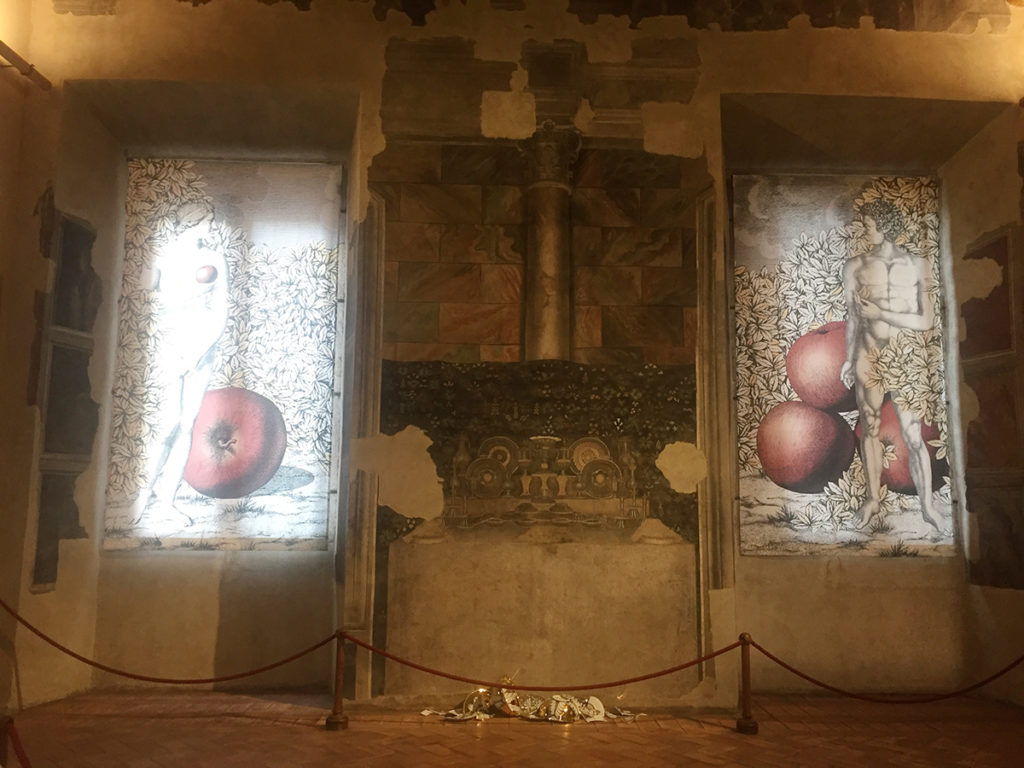
Looking around at all the forms his graphics took on, my mother even turned to me at one point to say “You should do that! Make a tray – or a screen!” Truly my ego was fluffed for my mother to put a connection between my work and Fornasetti’s.
Overall every aspect of the Fornasetti exhibition was a journey of design unlike any other. From the memorable quotes to incapsulate the show, to the ease of mixing two worlds, it truly was an innovative and enticing experience. After all where else could you find an exquisitely made Roman statue of a seated warrior with a hand-crafted guitar branded with a marble buttocks beside it? With such inspiring work who knows… maybe I will make that tray my mother mentioned after all!
